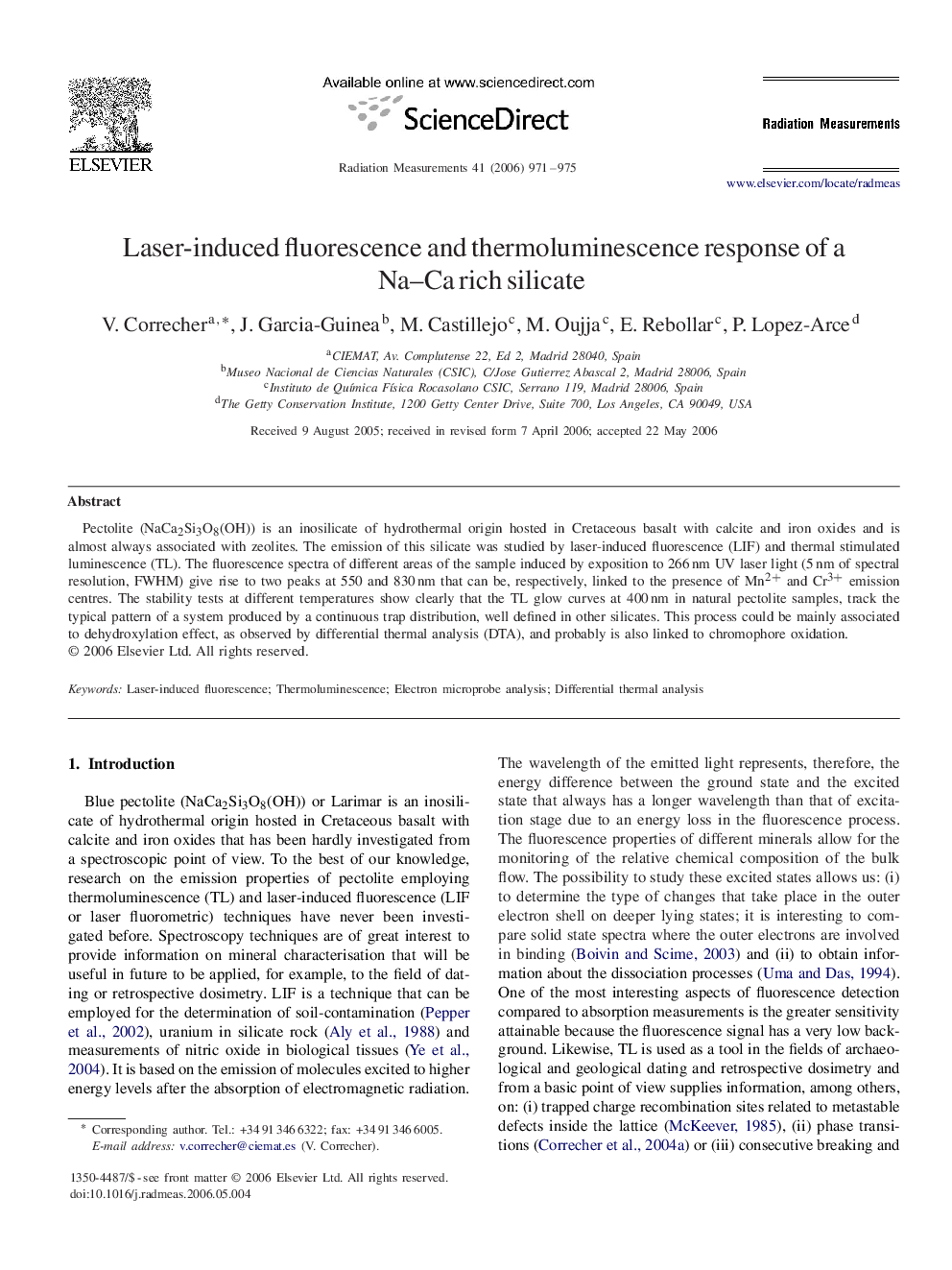| Article ID | Journal | Published Year | Pages | File Type |
|---|---|---|---|---|
| 1881372 | Radiation Measurements | 2006 | 5 Pages |
Pectolite (NaCa2Si3O8(OH)) is an inosilicate of hydrothermal origin hosted in Cretaceous basalt with calcite and iron oxides and is almost always associated with zeolites. The emission of this silicate was studied by laser-induced fluorescence (LIF) and thermal stimulated luminescence (TL). The fluorescence spectra of different areas of the sample induced by exposition to 266 nm UV laser light (5 nm of spectral resolution, FWHM) give rise to two peaks at 550 and 830 nm that can be, respectively, linked to the presence of Mn2+Mn2+ and Cr3+Cr3+ emission centres. The stability tests at different temperatures show clearly that the TL glow curves at 400 nm in natural pectolite samples, track the typical pattern of a system produced by a continuous trap distribution, well defined in other silicates. This process could be mainly associated to dehydroxylation effect, as observed by differential thermal analysis (DTA), and probably is also linked to chromophore oxidation.
